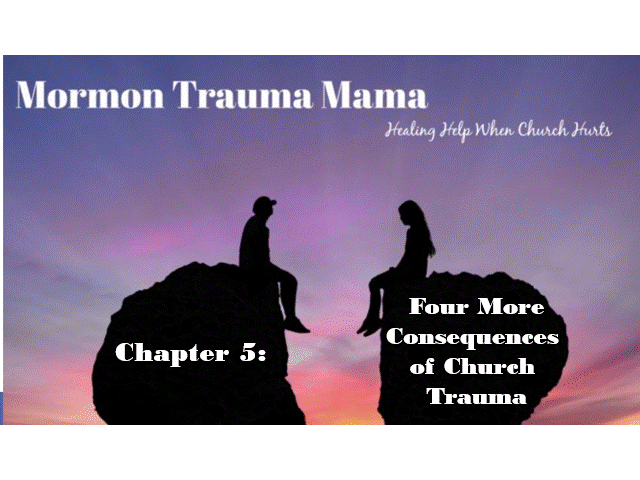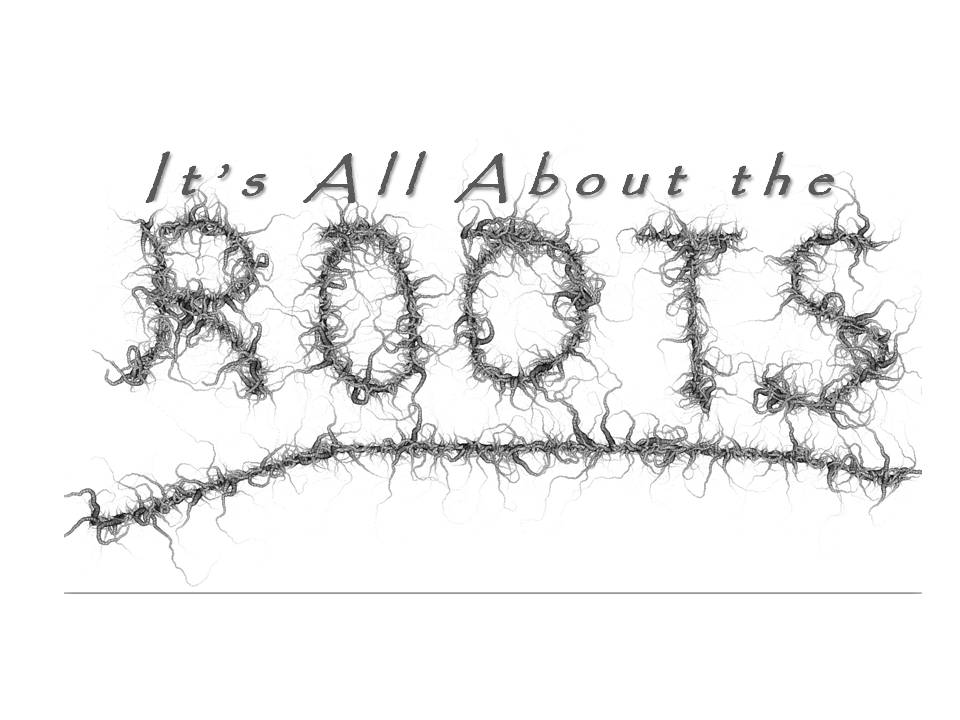
The Pendulum Swing of Trauma–And How It Pertains to Religion
I have a very dear friend that I’ve known since college who is in an extremely hard situation. After being married to her husband for over two decades, she finally gained the courage to leave him. Over the course of many years, he locked her in closets, drugged her, convinced her she was masturbating in her sleep and tied her wrists to the bed, beat her, choked her until she passed out, dragged her by the hair out of the shower and across rooms, manipulated all of the people around him—including their children—to believe his every word, etc. He even had his church leaders completely won over and held high church positions throughout their entire marriage. The first time my friend witnessed his manipulative skills was after their engagement (though she didn’t recognize it then because she was naïve and “in love”). But because he’d been sexually active with several women before meeting her, she expected they would have to wait a year to get married in the temple. She was shocked when his bishop told her that with her fiancé, it would be different. She was informed that her fiancé would be allowed to be married in the temple earlier than most going through the repentance process due to his honorable behavior. He did this wool-over-the-eyes again and again, even convinced her last bishop that my friend was no longer worthy of a temple recommend—even after this very bishop had said he trusted her and would not turn on her. But after talking to her husband, the bishop had a change of heart. He went over and, in front of their children, demanded she surrender her recommend. Her husband’s skills of influence and manipulation even helped him become a millionaire very early in life. Over and over, he won everyone to his side and did everything he could to keep my friend in place. When she finally said, “Enough!” and walked away, she was not truly able to escape from his control. Due to his financial status, his standing as a “righteous” Mormon who still attends the temple every week, and other narcissist skills, she was left with nearly nothing—including no child support for their five children and a large loan on their suburban which is still in his name. Because he has twisted and turned every corner he could, very few people know and understand her story but many, many people judge her for her current situation. Presently, she is living a life that she cannot even recognize from her former “squeaky clean” Mormon life—working at a liquor store, renting a small apartment and barely making ends me, drinking, smoking, and doing other behaviors not approved in Mormon theology. She’s wondered what in the world has happened to her—as does nearly everyone else. The judgments and the words of condemnation are coming down hard—from her family, from the small Mormon community she lives in, from the Church she used to love.
How does this happen? Have you seen these kinds of situations before–positions that cause you to shake your head and ask, “Is this the same person I once knew?”
What we tend to do when we see circumstances like this is criticize the struggling individual for abandoning all the morals and knowledge they once honored that kept them so “happy” and safe. We hear chiding, disapproving words: “If they’d only come back to the fold, they could be happy again!”
But there’s a phenomenon going on here that needs deeper examination. There’s a perpetual law that we all learned in science class which actually applies to all aspects of life. Consider it carefully: If you pull a pendulum thirty degrees to the right, it will swing back until it is thirty degrees to the left. Isaac Newton taught this law but it is not just a physical principle. (See Brene Brown’s Rising Strong and Michael Singer’s The Untethered Soul.) You have even taught it, probably: What goes up, must come down; there are consequences for your behavior. Let me add: AND FOR YOUR BELIEF SYSTEM.
Allow me to explain.
Let’s say you were born into a very cradled belief system on the far right side of life—into a very conservative Mormon home that taught you to “stay in the boat” at all costs. You were taught that your very salvation depended on not leaving. You were trained to believe that life outside of the boat was scary, bad, and hard. Because of the extremity of your ingrained belief system, if that cradle you live in breaks, “down will come baby, cradle and all”–meaning the swing to the left is going to be very hurtful, confusing, and hard. Further, the extremities are going to be obvious. The swing to the left is going to be manifested with intense anger and resentment–and often actions of fierce rebellion as well.
Frequently, the cradle begins to crack when you are shown—and recognize—how far right the Mormon beliefs you’ve been taught really are. You feel so betrayed, so depressed, so deceived when you learn the truth about the religion you’ve always loved, believed in, and sunk your whole life into. You see how carefully crafted the cradle on the right was organized and reinforced in hopes that it would never crack—to keep you in, to keep you “safe”—only to see it was crafted with half truths, full-blown lies, deeply imbedded fears, guilt, and shame. So when you arrive on the left, you likely feel completely liberated to have broken from such a hard and crusty cradle. Consequently, you determine to nest there. You build your own cradle of defenses to ensure you don’t swing back to the right. It feels so free and exciting because the right felt so restrictive and unhealthy. The last thing you want is to go back to where you were. “Life is so much better over here,” you say.
It needs to be noted that some swing to the left unintentionally or with a great deal of regret. The law of chastity, for example, is perhaps broken as a youth and all that is wanted is to get back to the security and “goodness” on the right. A return to the right is expected and the inner guilt and outer shame coming from the right is so hard to bear. So you swing back as fast as you can. In an effort to never swing back to the left again, extra reinforcements are put up to help you be even stronger the next time. The left is bad and must be avoided at all cost! Shame and fear, along with rigid repentance guidelines, are implemented more forcefully to help protect you—the vulnerable—from ever falling again.
Still, there are others who swing constantly from side to side. Having been knocked off, you are confused about which way is up and which way is down. You can’t seem to find your footing. You are full of instability, self-doubt, and fear. No paradigm seems to work anymore. So back and forth you go.
It also needs to be recognized that some “rebels” in life also make hard swings to the right. You have lived a hard life and are in desperate search for assurance and security. When the Mormon Church is introduced to you, its appeal is undeniable. Life has been such a hard, dark, and lonely road up to point. The cradle offers the opposite of what you have known—you are searching for a perfect family or a community of Saints, perhaps, as you have never experienced. You love the promises and perfectionistic approach to living so you hold onto the right side with all you’ve got.
And yet, here’s the thing: What both sides don’t usually realize are the extremities found on either side. The truth is, no side is better than the other. They are just opposites. They are both fear-based. What we are not or do not want to become often scares or infuriates us.
And so war happens—a war between those who have left the Church and those who are still in it. Both sides are throwing stones. Both are cradled in fear and resentment toward the other side.
What the right side doesn’t realize is that if healing and understanding is ever going to take place for those who have left, they are going to have to look at where they themselves are positioned—and where those who left were positioned prior to the swift swing to the left. If the cradle on the right hadn’t been so extreme, the swing to the left wouldn’t have been either. It’s the extremities on their own side that have caused such a hard and reactive swing to the left.
What the left needs to realize is that they merely swung to the other extreme and that they are still living in fear. They also need to have mercy and compassion for themselves, realizing WHY they are there. They need to view their rebellion and anger objectively. Is that really where they want to be–living in anger for the rest of their life?
Having seen people on both sides up close (and having camped on both sides), I’m a believer that as long as we have “this side “ and “that side,” conversations are going to be divisive. In that way, we aren’t going to be able to see people for who they really are. We don’t have to talk to people if we feel we already know all about them—they are a “true-blue Mormon” or they are an apostate. What we need is to reduce the fear and be willing to come down a little—come more to center. Conversations are needed! Those still in the Church need to be willing to ask with all sincerity: “Why did you leave the Church?” “What are your values now?” (Yes, they do have some–and they are probably the same, or nearly the same, as yours!!) “How are you?” “How do you see life now?” Those who have left the Church need to not just assume those who have chosen to stay are uneducated and arrogant about their choices. Rather than assuming ANYTHING, we need to discover individuals. The labels need to come down. When we put labels on people, we stop seeing them. We need to do more talking and considerations for individuals and their choices. We need to value each person. We need to be stone-catchers, as Jesus was. He said, “He that is without sin among you, let him first cast a stone at her” (John 8:7). By so doing, he stopped the pendulum swing for the lady caught in adultery. She realized he SAW her and LOVED her. He brought her to center. Love does that. We don’t have to live in the extremities. We CAN come together. I am convinced that love—truly seeing and accepting each other for our individual uniqueness and worth—is the answer and the way.
So please, can we not come to center so we can talk eye to eye, heart to heart? That is where love can be truly felt and experienced. That is where fear can have a rest and love can truly be felt beating its life-giving rhythm of peace and hope.
~Danna~






4 Comments
Becca
❤️
Paula
Damn. So that’s what happened! I finally get it!
Tiffanie
Lovely. Thank you.
Arnold B.
You hit the BULL’S EYE!!!